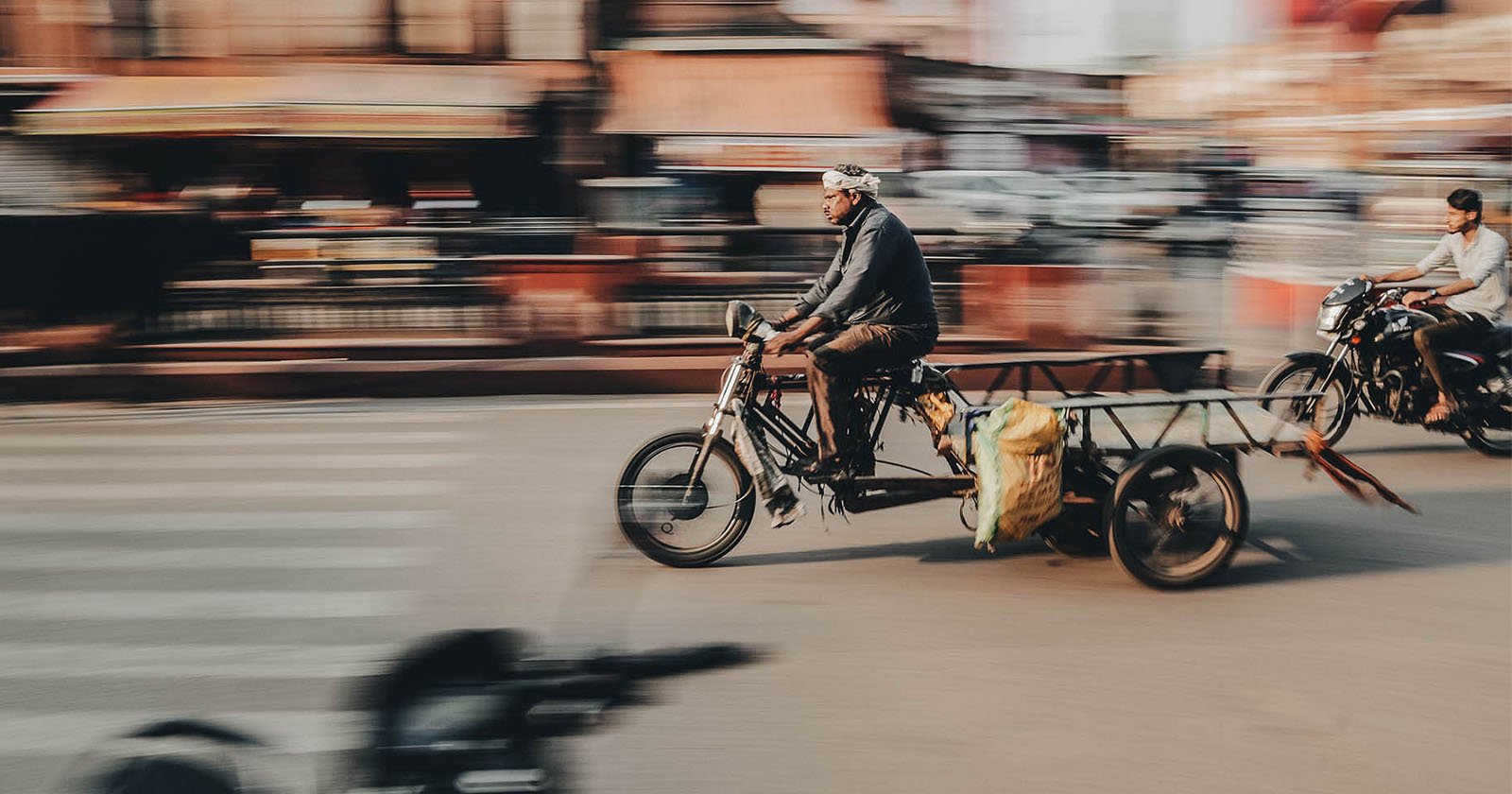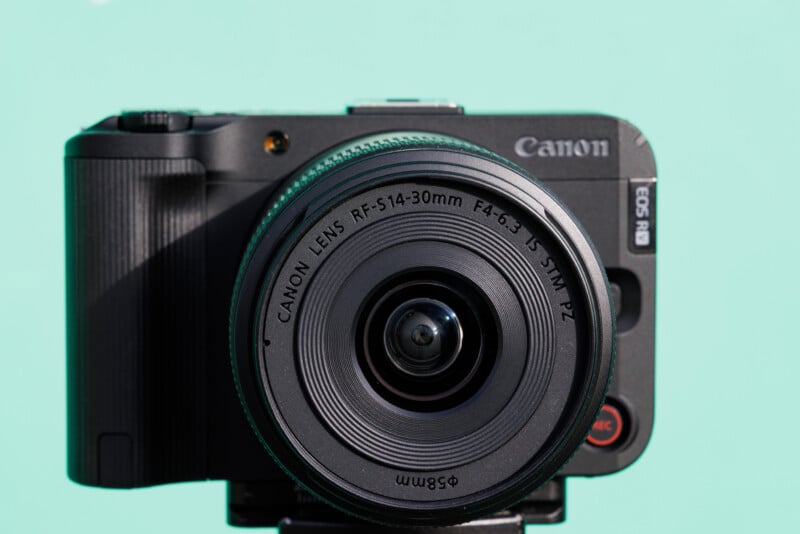
Check out our latest products
![]()
As Canon Ambassador, I traveled to India with a pre-released Camera EOS R50 V. This is how it coped with busy streets, poor lighting, and breathtaking vistas.
For this test, I went to India, a place I am very familiar with and always find inspiring to photograph. For me, it’s one of the most interesting and pretty spots to take spontaneous photographs. You have so much to see and do: colorful markets, sacred lakes, and vibrant ceremonies. Everything is within a small area, so there are always new photo opportunities around. My mission was to test the camera for Canon Germany and Canon Switzerland, with a special emphasis on its video functions. In this article, I will concentrate on how the camera copes with photography.

Canon markets the R50 V primarily as a vlogging camera. You can tell this by the button placement, and all of the video features the camera has. But I was wondering: How does the camera perform when taking photos? I wanted to see by placing it in everyday applications on my journey.
Disclaimer: I am a Canon Ambassador and would like to be honest in my affiliation, but all my impressions are based upon actual use over the course of my traveling week.
First Impressions: Canon EOS R50 V Design and Handling
I had expected to get a small camera, but I was surprised when I first held the camera in my hands. The camera is only slightly longer and wider than my cell phone, just thicker. It is very convenient and portable, an excellent feature that is suited to travel.
![]()
The included kit lens, RF-S 14-30mm Power Zoom, was a standout. With this lens, I was able to zoom both in and out with one finger, either directly on the lens or on the camera body. This was a feature I hadn’t enjoyed in a very long time with my photo cameras. With my R5 Mark II and my usual lenses, I am accustomed to manually zooming. With this, I could zoom very smoothly electronically, a very helpful feature with videos.
For my professional work, I always travel with a heavy, large backpack full of prime glass. But the joy of travel and street photography is to be small and lightweight. On this trip, I carried all my equipment with a hip bag. I had the R50 V with the new RF-S 14-30mm, the wide-angle RF-S 10-18mm, and the zoom RF-S 18-150mm. I spent most of the time with the 18-150mm lens since it enabled me to respond to various moments.
![]()
Designing Details: The Viewfinder and Interaction
An outstanding design omission was a lack of an optical or digital viewfinder. You’re stuck with the rear screen to view all your photos (and footage), just like a smartphone. There were a few moments I wished I had a viewfinder, particularly under really bright sunshine. Since the introduction of mirrorless cameras, I was accustomed to reviewing my photos via the electronic viewfinder, particularly since I am a little farsighted and have better vision with diopter correction. Without a viewfinder, I found myself cropping more of my photos in post-processing since it was more difficult to frame the ideal shot with the screen under sunny conditions.
![]()
But there was one good thing, too: Not having a viewfinder made me more visible to the people I was taking photos of. I didn’t conceal myself behind a large camera and lens. The people I took photographs of could see me, and I could see them, and this made a different type of connection. I didn’t appear to be a professional photographer, and that benefited me. The connection between my subject and myself felt more relaxed and free, and I could take more candid and natural portraits.
Photo Function in Key Scenarios
Street Photography: India’s streets are full of life, color, and movement. The R50 V’s autofocus system is top class. It is inherited by Canon’s mid-range mirrorless cameras and is spot-on. The camera followed focus well and accurately, even with moving targets, and the animal and face detection functioned consistently. I found the flip-out touchscreen extremely useful for taking photos from unexpected angles, either at the hip or above my head in a crowd. One of my personal highlights was a shot near the holy Pushkar lake with people getting ready for a bath in the back. I approached very close to the water to take photos of flowers floating on the surface and had people in the distance. The flip-out screen allowed me to take photos at this angle easily and thanks to the wide-angle, I could capture the entire scene.
![]()
Low Light: The APS-C sensor of the camera is a significant plus point over a smartphone in dim lighting conditions, such as within temples or night scenes. The R50 V took excellent photos with minimal noise, even at high ISO. I managed to take crisp, detailed shots with demanding illumination, and the noise handling was excellent.
![]()
Portraits: I have some of my best memories taking portraits in India. One memorable photo was of a woman and her children at the holy Pushkar lake. I sat with them, and the kids immediately requested a photo. As the camera was so quiet and compact, I talked with them naturally, smiled at them, and laughed with them. This totally relaxed the mood. I used the silent electronic shutter, so they had no idea I took several photos. The result was a lovely portrait of the mother: she looked directly at the camera for a long time and was overjoyed when I showed her the photo.
![]()
With the trio of lenses I took with me, I had all the focal lengths I could want. The APS-C sensor crop factor amplified the reach, and I could easily switch back and forth between wide-angle and telephoto shots. Such versatility made the R50 V an excellent step up from a smartphone, and with the bigger sensor and superior quality of the photos, too.
Video Performance
The R50 V is obviously geared towards video, with a side-mounted tripod socket to facilitate vertical filming, ideal for posting to social media. I appreciated the options to film with Canon Log 3, enabling more precise color grading in post. The autofocus when filming is excellent, keeping people in smooth focus as they move around the frame. The front-mounted record button is a welcome touch, allowing quick filming starting when I’m filming solo. For content creators and vloggers, this is very convenient.
![]()
Canon EOS R50 V User Experience and Workflow
The battery life was excellent, and I never encountered any issues, with one battery lasting the entire day. I charged the camera with a power bank if I really needed to. The entire gear was compact enough to fit in a small hip bag, and I was always prepared to take a shot without needing to carry a bulky camera bag.
For transferring the photos, I accessed the photos directly via the Canon app to quickly share them on the go. As the camera hadn’t been officially released, Lightroom wasn’t able to see the RAW files, so I edited and opened them by using Canon’s Digital Photo Professional software. This was a minor change, but it worked fine with my requirements. As and when Adobe accepts the new CR3 files, I will be working with my typical workflow.
![]()
Canon EOS R50 V Advantages and Disadvantages
Pros:
- Highly compact and lightweight—best suited to travel photography and street photography
- Quick and accurate autofocus with face and subject detection
- High-quality images, comparable to bigger Canon mirrorless bodies
- Easy to use, with useful features both for photography and video
- Silent shutter and flip-out screen enable easy capture of spontaneous moments
- Long-lasting battery life to take all-day shots
![]()
Cons:
- No viewfinder: Difficult to view the screen in direct sunlight
- No in-camera image stabilization: Utilize stabilized lenses to get the best results
- Some people find the camera to be less professional, but this can prove to be an advantage when doing candid photography
![]()
The Canon EOS R50 V Is a Compact Traveling Companion That Delivers Pro-Level Results
The Canon EOS R50 V is just right for anyone needing better photo quality than a smartphone without the burden of lugging heavy camera equipment. It is excellent for traveling photographers, street photographers, content creators, and even professionals who need a compact, quality second (or third) camera. It slides effortlessly into any bag with space to keep much more.
![]()
![]()
![]()
![]()
![]()
I can also see myself taking two R50 Vs with me on an upcoming expedition, one with a wide-angle and one with a zoom. That way, I can cover all I want to capture with a minimum of equipment and bulk. To me, the R50 V is a true traveling companion that produces pro-level results in a body that is wonderfully compact.
Image credits: Photos by Martin Bissig. Many more of Bissig’s photos from his R50 V experience in India are available on his website.
About the author: Martin Bissig is a professional action and outdoor photographer based in Switzerland. The opinions expressed in this article are solely those of the author. Bissig is one of the most published outdoor photographers in Europe and a Canon Europe Ambassador. You can find more of Bissig’s work on his website, Facebook, and Instagram.

![[2025 Upgraded] Retractable Car Charger, SUPERONE 69W Car Phone Charger with Cables Fast Charging, Gifts for Men Women Car Accessories for iPhone 16 15 14 13 12, Samsung, Black](https://i1.wp.com/m.media-amazon.com/images/I/61SaegZpsSL._AC_SL1500_.jpg?w=300&resize=300,300&ssl=1)



![[True Military-Grade] Car Phone Holder【2024 Stronger Suction & Clip】 Universal Cell Phone Holder for Car Mount for Dashboard Windshield Air Vent Long Arm Cell Phone Car Mount Thick Case,Black](https://i2.wp.com/m.media-amazon.com/images/I/715PBCuJezL._AC_SL1500_.jpg?w=300&resize=300,300&ssl=1)
![[エレコム] スマホショルダー ショルダーストラップ 肩掛け ストラップホールシート付属 丸紐 8mm P-STSDH2R08](https://i3.wp.com/m.media-amazon.com/images/I/51BMFf06pxL._AC_SL1500_.jpg?w=300&resize=300,300&ssl=1)







